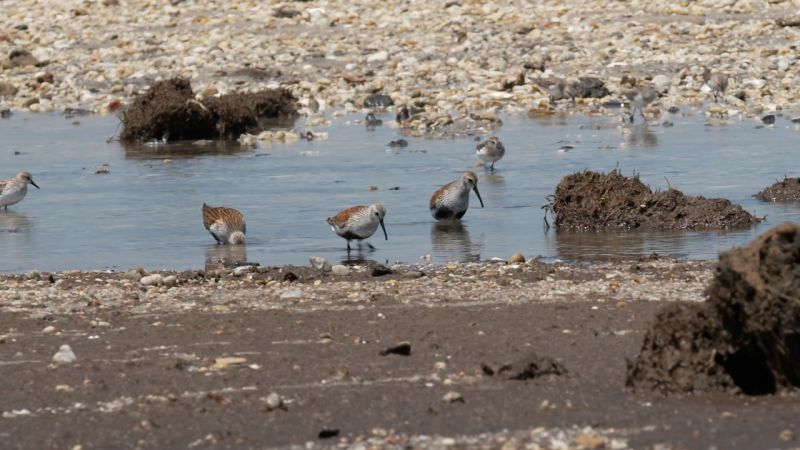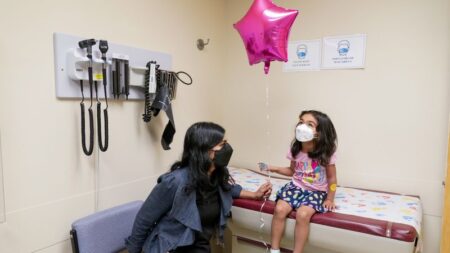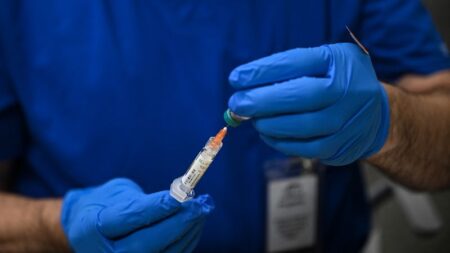The seasonal spectacle at Delaware Bay each May marks a significant event in the ecological calendar, attracting organisms from various habitats for survival and reproduction. Horseshoe crabs, with their distinctive round, tank-like shells, emerge onto the sandy beaches during the first full moon of the month. Their primary purpose is to mate and lay eggs, contributing to the intricate web of life dependent upon this fertile ecosystem. This occurrence is not just a marvel of nature but also serves as a vital food source for millions of migrating shorebirds.
The ecological importance of this area cannot be overstated. Each spring, hundreds of thousands of migratory shorebirds flock to the beaches of Delaware Bay, where they feast on the nutrient-rich eggs laid by horseshoe crabs. This feeding frenzy allows the birds to double their body weight in preparation for their arduous migrations. The journey typically takes them from South America to their summer breeding grounds in the Arctic, making Delaware Bay a crucial pitstop for up to 25 different species of birds.
The annual gathering of horseshoe crabs and shorebirds at Delaware Bay has drawn the attention of scientists and researchers, particularly in light of emerging health concerns such as avian influenza. The ongoing threat posed by an avian flu virus, specifically H5N1, has made the work conducted at this key ecological site all the more pressing. As the virus wreaks havoc among poultry and dairy cattle populations in the U.S., scientists closely monitor the situation to ensure that timely interventions can be made if necessary.
Professionals like Dr. Pamela McKenzie and her research partner, Patrick Seiler, joined a team funded by the National Institutes of Health at St. Jude Children’s Research Hospital, conducting studies in this beach environment for nearly four decades. Their work, initially directed by Dr. Robert Webster, focuses on the droppings of shorebirds – a surprising reservoir of information on influenza viruses. Webster’s groundbreaking realization that these viruses reside in the intestinal tracts of birds rather than their respiratory systems comprises a fundamental aspect of the ongoing research.
Each season, the research team collects samples of bird feces, which are teeming with various influenza viruses. On their first visit to Delaware Bay in 1985, they identified influenza in about 20% of the samples. Given the area’s location along the Atlantic flyway – a significant migration route between South America and the Arctic – the beach serves as an ideal observatory for tracking the flu’s evolution.
Despite the extensive surveillance efforts, the presence of H5N1 in the migrating birds remains uncertain. As McKenzie and Seiler collected samples, they followed protocols that included wearing gloves and face masks while maintaining a careful approach on the soft, boggy beach. Each sample collected is meticulously packaged and processed, contributing vital information to an international database that maps the genetic evolution of influenza viruses.
Dr. Lisa Kercher, who oversees laboratory operations at St. Jude, has innovatively converted an RV into a mobile lab to streamline the efficiency of their sampling process in the field. Her aim is to expedite the screening of samples for influenza viruses, reducing the timeline for identifying potential threats. As the data from their samples is collected and recorded, it plays a crucial role in predicting the patterns and movements of flu viruses that can affect both wildlife and agricultural species.
In recent months, concerns about H5N1 have intensified. The emergence of the virus in a Texas dairy herd raised alarms as it marked the first instance of the H5N1 strain infecting cattle. Historical context adds to the worry; while past outbreaks have been mitigated through strict culling measures in poultry populations, the H5N1 strain is proving more resilient.
As the summer unfolded, human infections related to H5N1 began to surface, particularly among farmworkers. However, studies indicated that the strains observed in humans differed somewhat from those in livestock. Such observations reinforce the critical nature of continued surveillance in migratory birds, as they serve as a bridge between animal populations and potential human exposure.
Throughout this ongoing investigation, the St. Jude team has uncovered noteworthy links to the Mississippi flyway, connecting aquatic life and land birds. Utilizing their findings, they endeavor to clarify how influenza viruses spread and evolve. Continuous research and monitoring are vital for understanding the ecology of influenza, especially regarding how avian species might act as reservoirs for future outbreaks.
Despite the present uncertainties surrounding the threat level of H5N1, the researchers remain vigilant in their pursuit of knowledge. Their efforts to understand the changing dynamics of viral behavior in birds and livestock will enhance public health preparedness, ensuring they can respond effectively should a new health crisis emerge. As they anticipate the next spring migration at Delaware Bay, these scientists epitomize a proactive and adaptable approach to modern epidemiology, ever-ready for the challenges that lie ahead.












